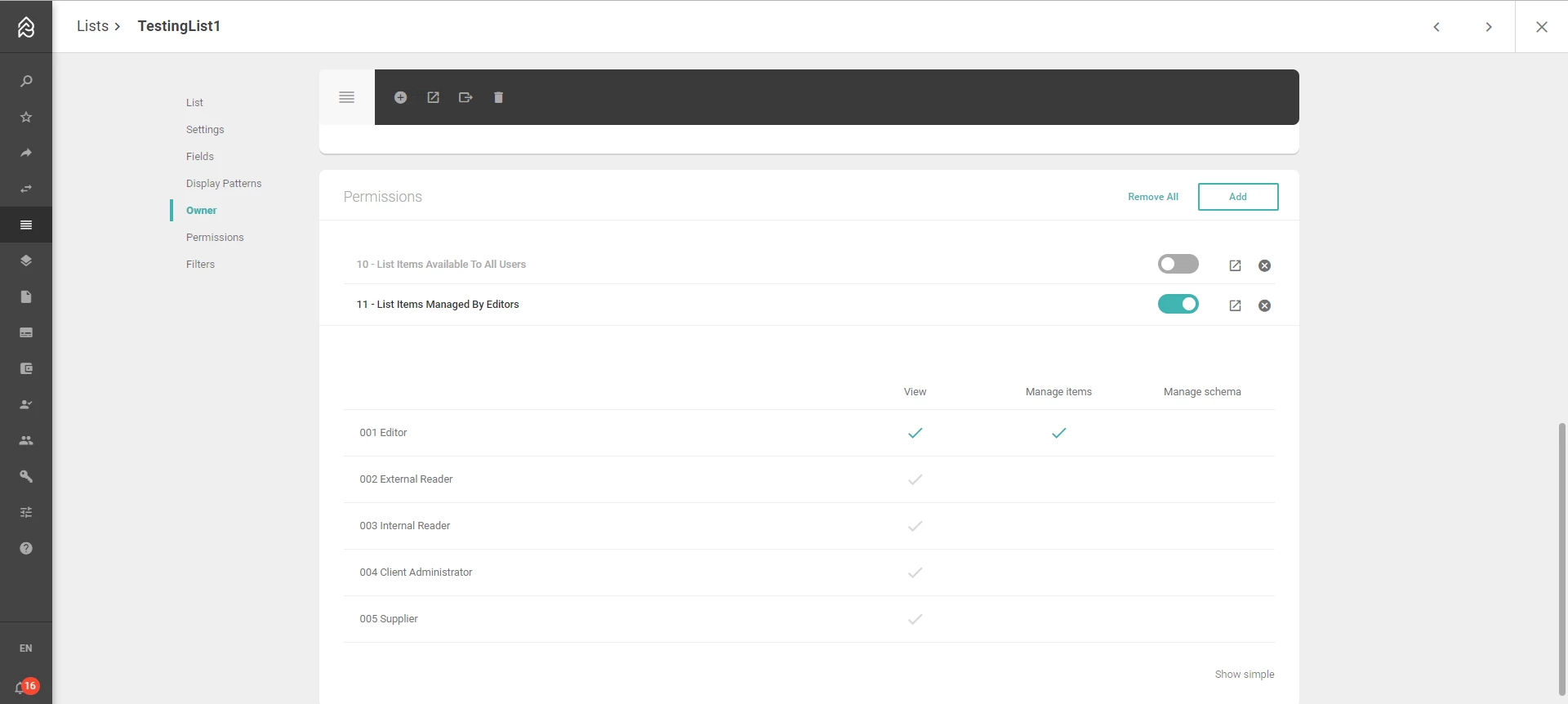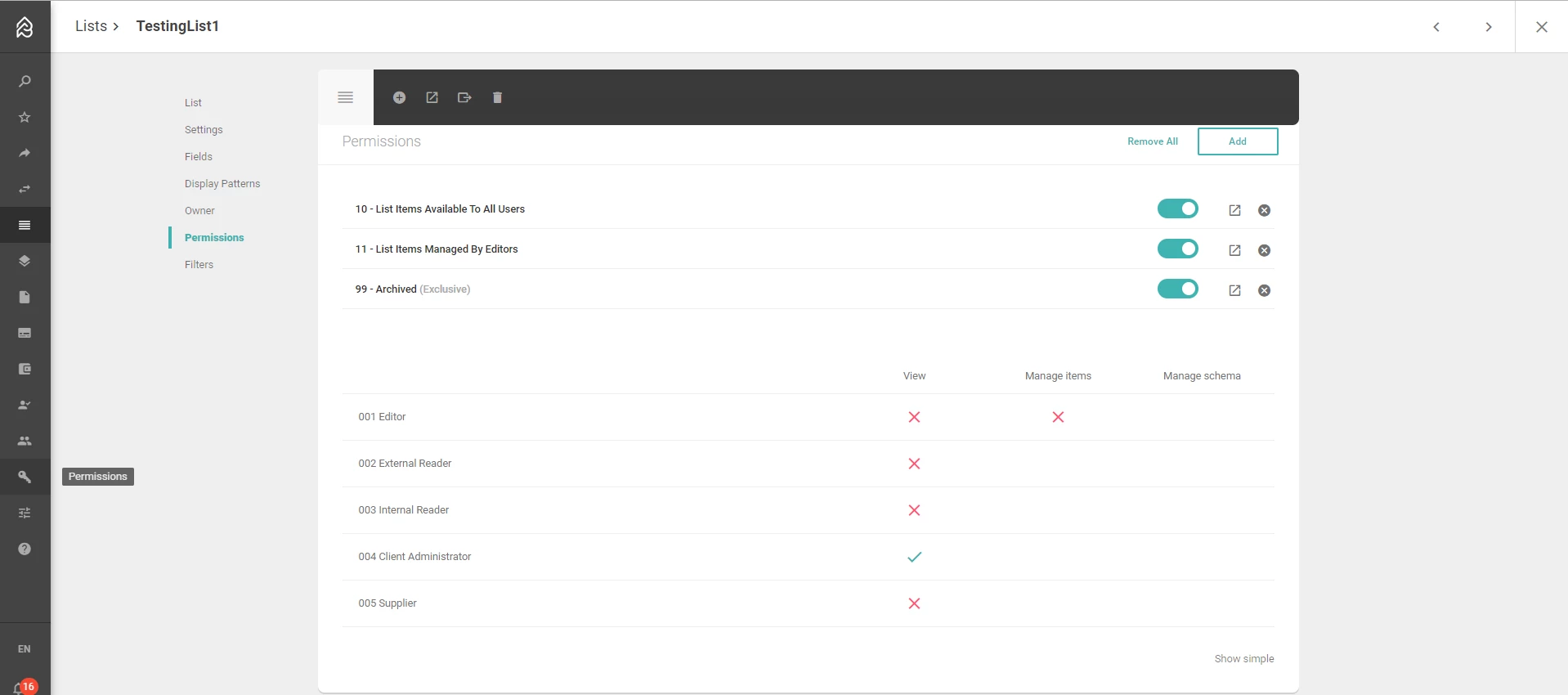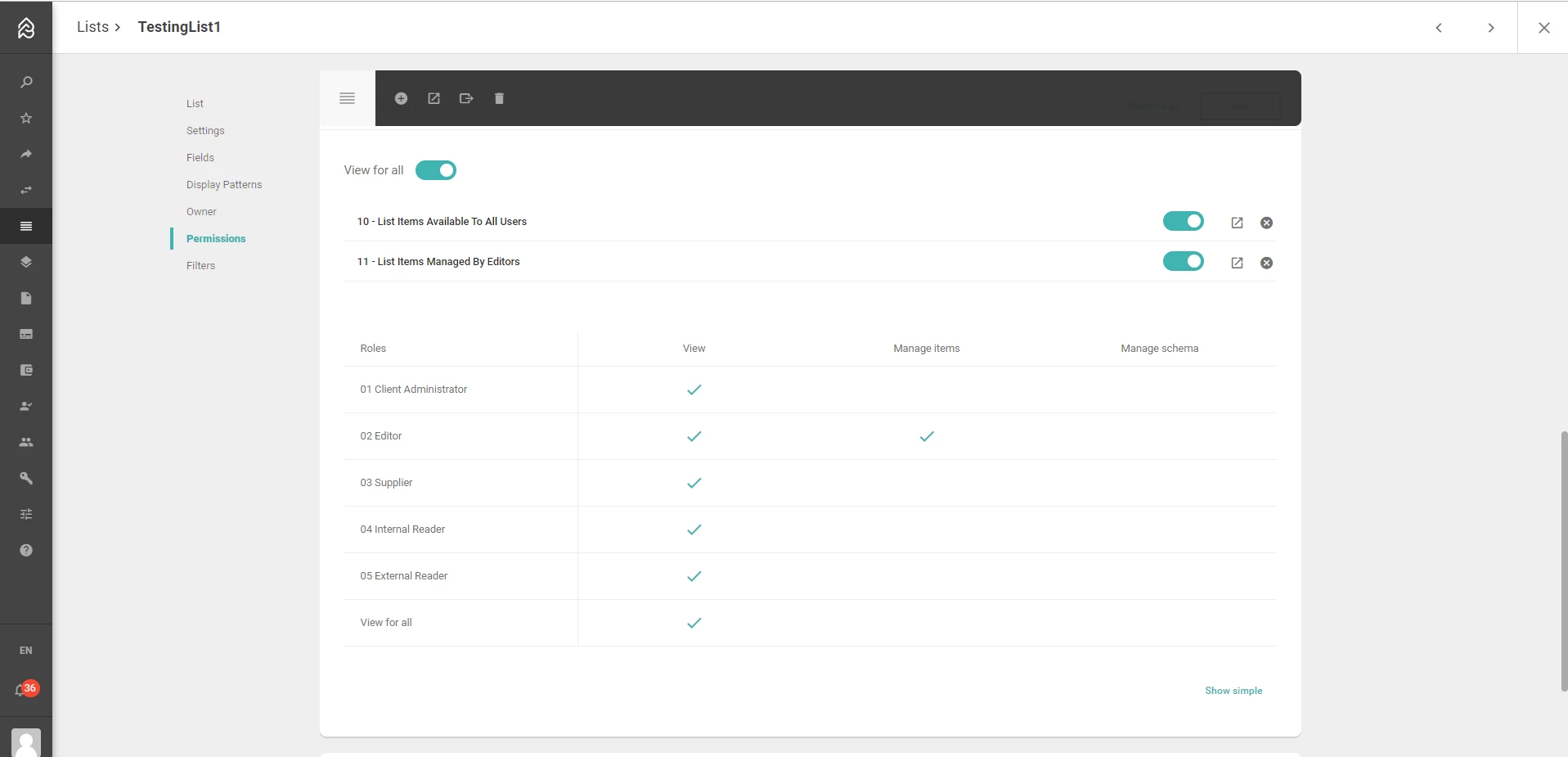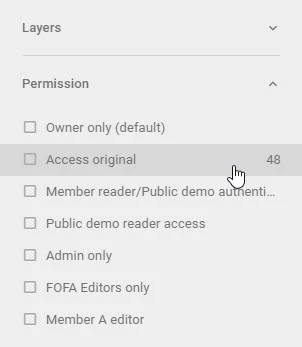Permission sets assign multiple user roles to content or schema and allow you to control the level of access the user roles have on content or schemas. Permission sets applied to content/schemas are additive, all of them apply. Default content permission sets that are added to a content item on creation can be added by Picturepark Staff.
Permission set permissions define which user roles can manage and apply the permission sets to content and schemas.
Permission sets can be set exclusive, which means only this one exclusive Permission Set applied. Exclusive Permission Sets are additive too, which means the combined set of permissions from all exclusive Permission Sets applies.




